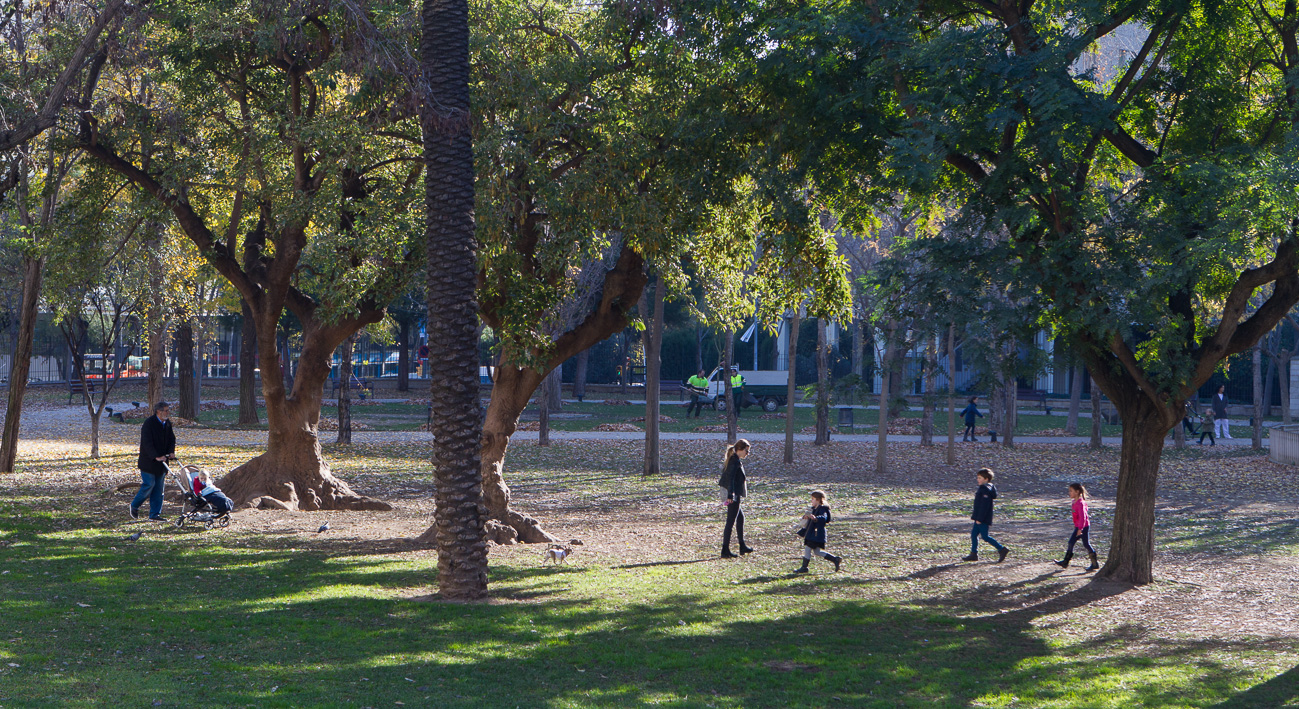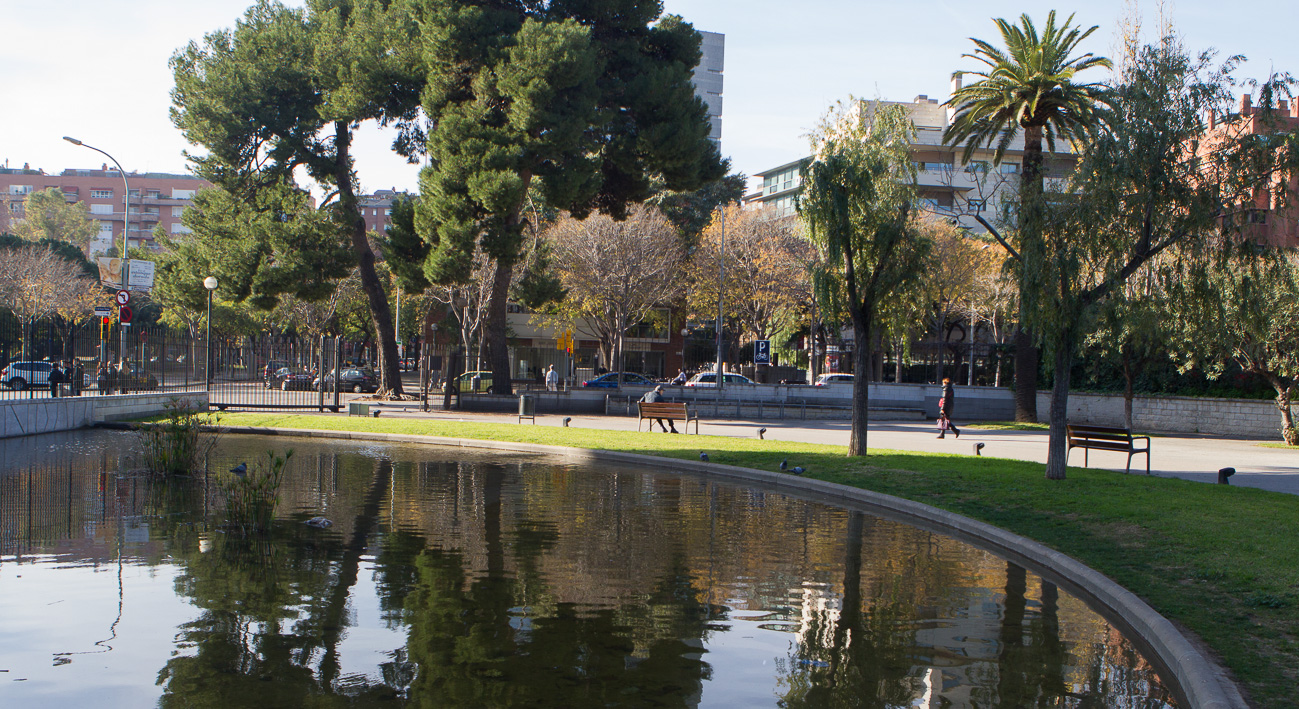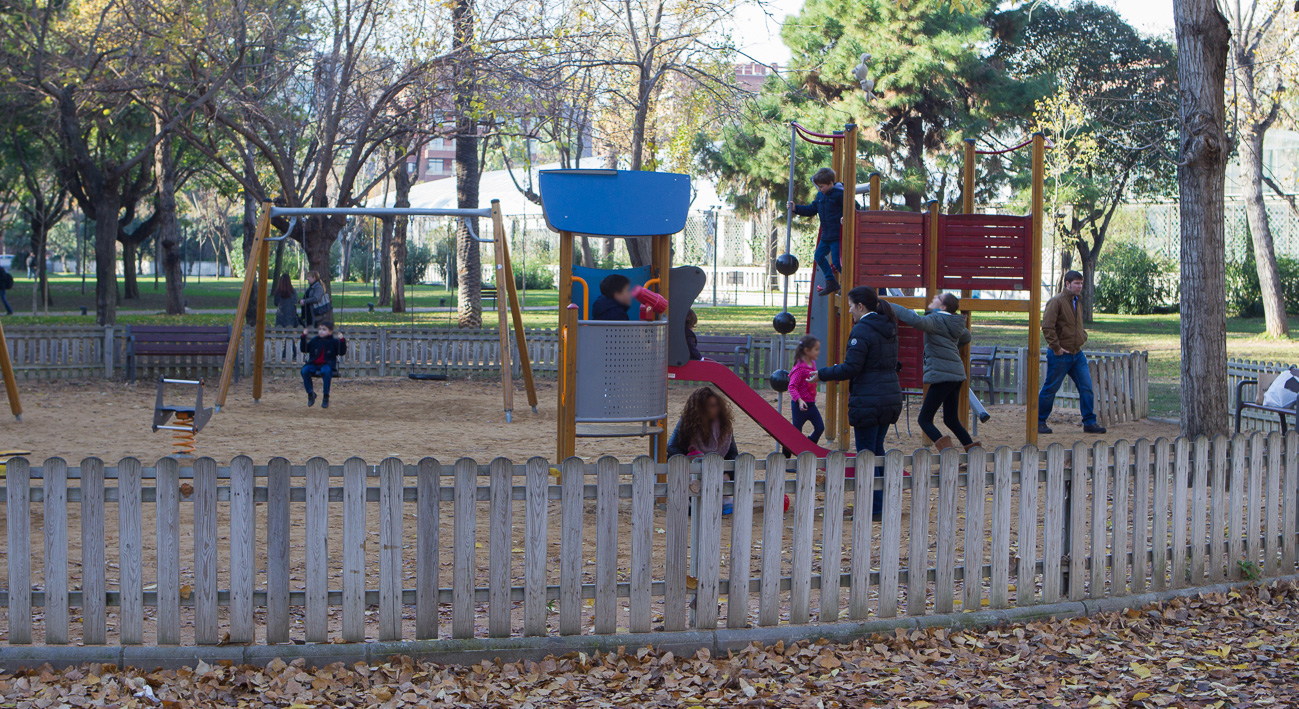The area has traditionally enjoyed huge popularity as a space not just for walks, recreation and leisure but also for taking up outdoor sports. It housed the Reial Club de Polo at the start of the 20th century and later became a much-used public sports complex.

History
The gardens were already hugely popular among Barcelonians at the start of the 20th century. The Reial Club de Polo was established there in 1910, on land popularly known as Can Ràbia, next to Carretera de Sarrià, the Sarrià road. An area between Av Diagonal and the land that RCD Espanyol’s Sarrià Stadium would be built on.
It was much larger than the current green space, with grass fields, horse-riding rinks, coach parks, service booths, and social and sports areas, including tennis courts and gardens with areas for taking a stroll. The Reial Club de Polo moved to its current site, on Av Diagonal, in 1932. The Parc Esportiu de Can Ràbia became the Pools and Sports complex in 1935. RCD Espanyol used the sports facilities to give players trials and other football-related activities.
School sports, the People’s Olympics, sardana-dancing, balls and festive parties were held on the site too. During the Spanish Civil War it was turned into a recruitment centre and after, under the Franco dictatorship, it regained its former status as a private sports centre, when it was called Piscinas y Deportes. Local pressure towards the end of the 1980s led to being returned to public use.

Biodiversity
Entering from C/ Doctor Fleming, you will see a small, semicircular pond with two Chinese weeping willows. From there you can see a broad, quiet, partly shaded area that reaches the path.
In the foreground you will also see specimens of ombu (Phytolacca dioca) and tipus (Tipuana tipu). Skirting the private centre you will come across a line of palm trees (Phoenix canariensis). The central avenue boasts a group of poplars (Populus nigra) – there are many of them all around the garden – and tipus on the other side. The route reveals several specimens of mulberries (Morus alba), palm trees and dwarf palms (Chamaerops humilis), pine trees (Pinus canariensis), peppercorn trees (Schinus molle) and black locusts (Robinia pseudoacacia). A Boston ivy (Parthenocissus tricuspidata) makes an arbour on a wooden lattice, at the other end of the gardens, just by the entrance to a private car park (junction of C/ Bori Fontestà and C/ Ganduxer). The oleanders (Nerium oleander) growing there have outgrown the shrub stage and become trees.
The northern slope has a smaller, triangular-shaped landscaped area that closes the gardens off and insulates them from the city’s hustle and bustle. This part has Aleppo pine and holm oak plantations, with abelias, acanthus trees and mastic trees at the foot of their trunks.

Art and Architecture
The subsoil contains the Bori i Fontestà rain-water deposit, one of those making up the municipal grid that manages the city’s abundant rain water. There is also a well for collecting water used for Turó Park, one of Barcelona’s historical parks that is very near these gardens.
-
- Phone number
- Dir Diagonal: 932 022 202
-
- Titularity
- Private center
- Address:
- Carrer del Doctor Fleming, 8
- Districte:
- Sarrià-Sant Gervasi
- Neighborhood:
- Sant Gervasi - Galvany
- City:
- Barcelona
Timetable
| Periode | Dies | Hores | |
|---|---|---|---|
| de l'1 de maig al 31 d'agost |
Tots els dies | de 10:00 h a 21:00 h | |
| de l'1 de setembre al 30 de setembre |
Tots els dies | de 10:00 h a 20:00 h | |
| de l'1 d'octubre al 31 d'octubre |
Tots els dies | de 10:00 h a 19:00 h | |
| de l'1 de novembre al 28 de febrer |
Tots els dies | de 10:00 h a 18:00 h | |
| de l'1 de març al 31 de març |
Tots els dies | de 10:00 h a 19:00 h | |
| de l'1 d'abril al 30 d'abril |
Tots els dies | de 10:00 h a 20:00 h |
- Sections of this equipment
- Dir Diagonal
- Sections of this equipment
- Àrea de joc infantil
- Àrea d'esbarjo per a gossos
Accesos:
- Doctor Fleming / Bori Fontestà- Doctor Fleming - Bori Fontestà- Ganduxer- Santa Fe de Nou Mèxic
Esdeveniments
-
X Cursa DIR Kids Barcelona
25/05/2024






